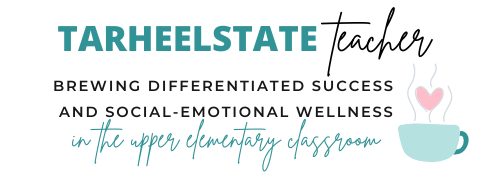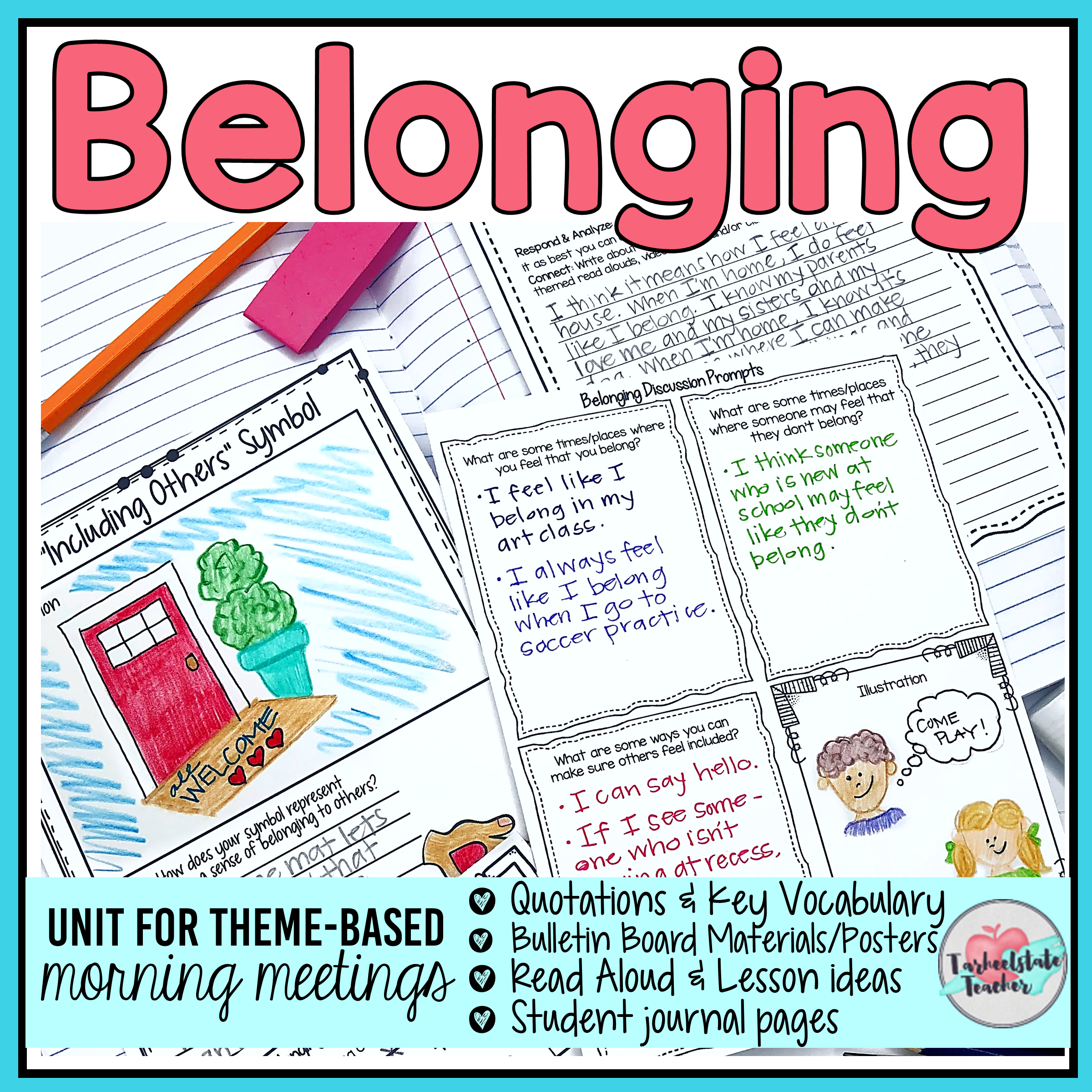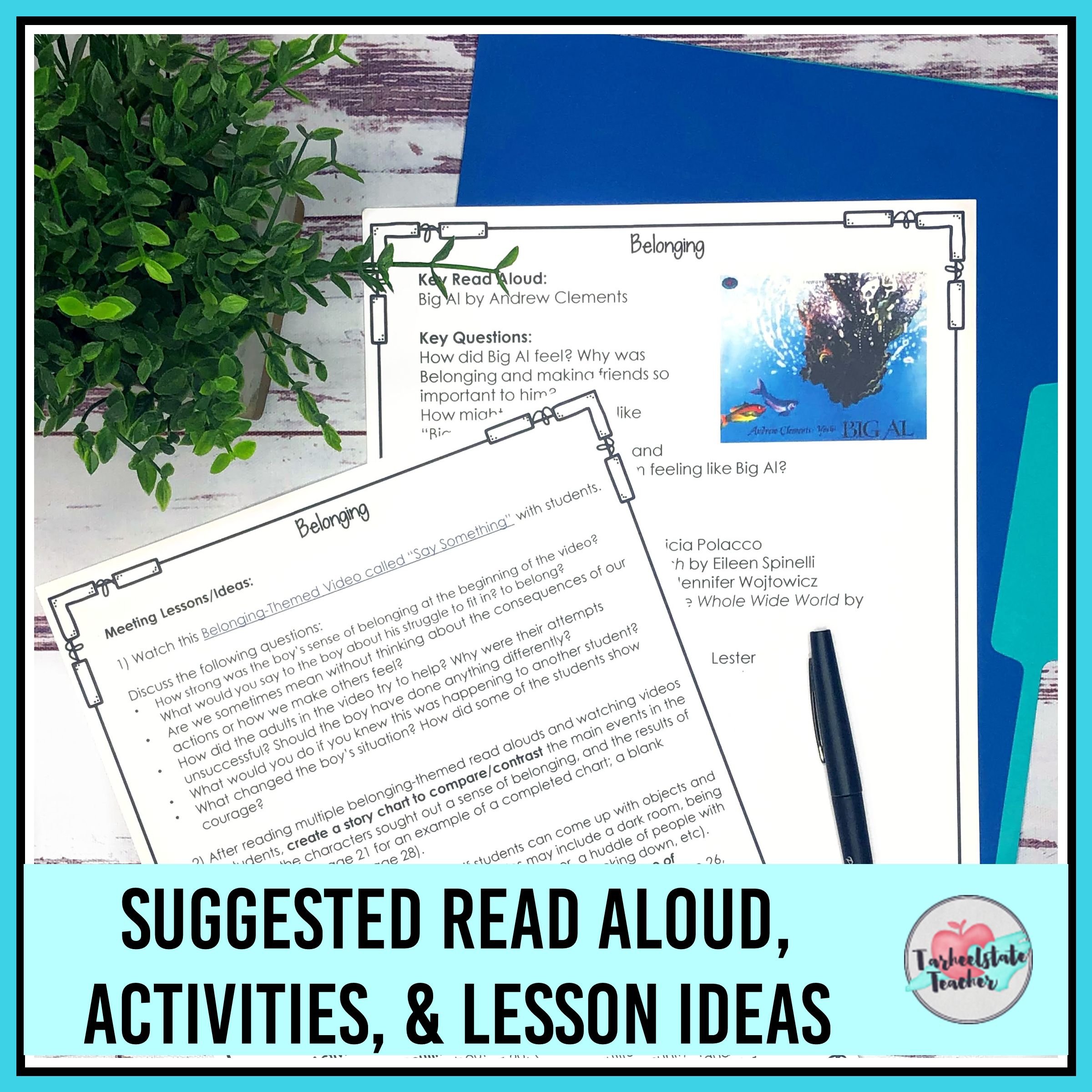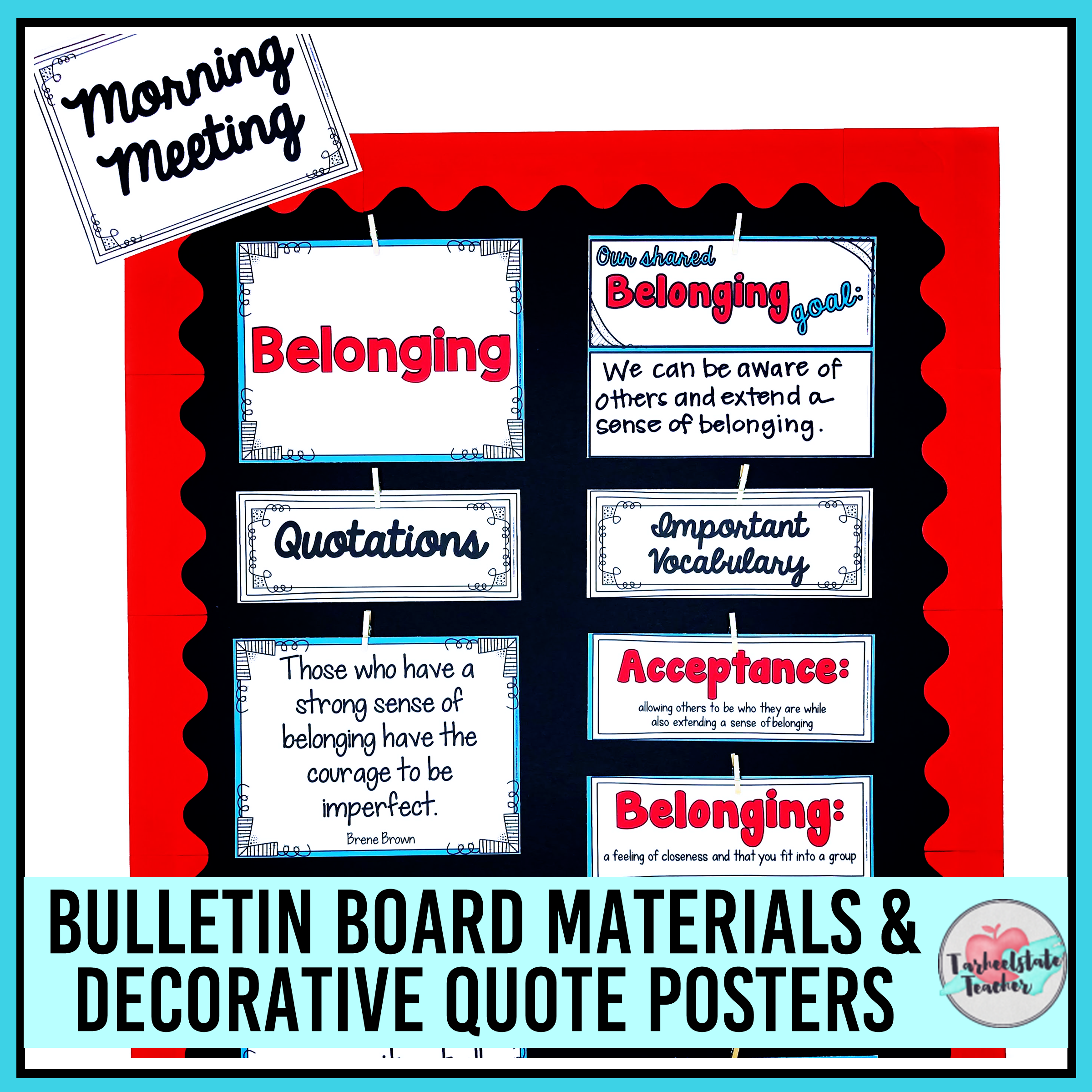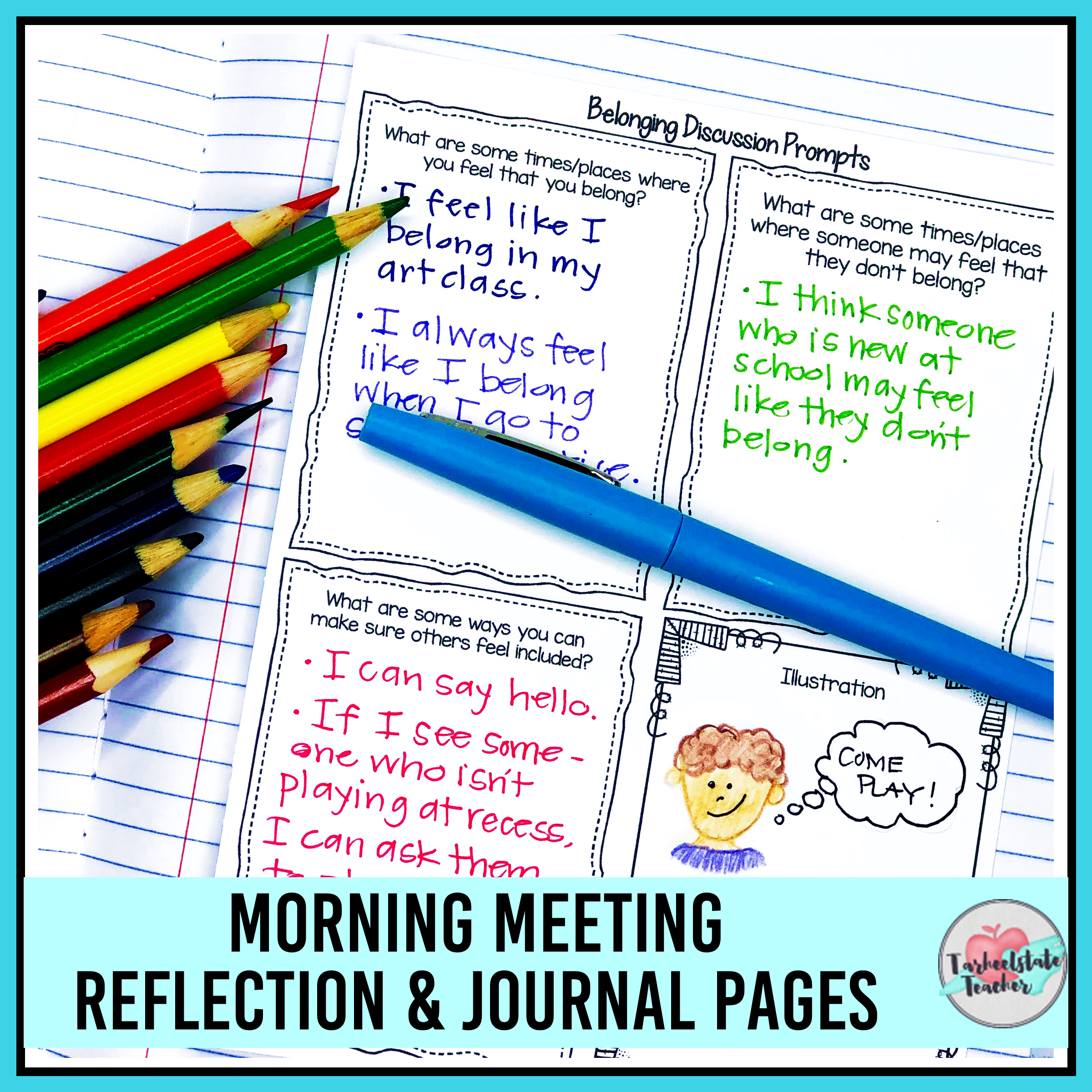Go Beyond Morning Meeting Questions: How To Combine SEL & Morning Meetings
The Responsive Classroom defines morning meeting as “an engaging way to start each day, build a strong sense of community, and set children up for success socially and academically.” To be literal, morning meeting is a 15-30 minute meeting in a classroom to start the school day. The Responsive Classroom’s model includes a routine of a greeting, share time, a group activity, and a morning message. Teachers and schools implement classroom morning meetings to have a consistent community-building routine focused on helping students get to know more about their classmates, especially in younger-grades classrooms.
I implemented a version of the Responsive Classroom’s morning meeting routine with my 4th graders. We instantly bonded over morning meeting questions, handshakes, name games, fun greetings, and share time. But, to be honest, after the newness of the year wore off, I found myself needing to get “more” out of morning meeting time. I began developing a set of routines and strategies that has grown into it’s own framework.
COMBINING SEL IN THE CLASSROOM WITH MORNING MEETING
This new way of looking at classroom morning meetings offered me opportunities to broaden the resources and morning meeting activities I used with my students during morning meetings and to teach social-emotional learning topics and skills. It provided a way for my students to “get more” out of classroom morning meetings.
Now instead of morning meeting questions, handshakes, and greetings, my SEL morning meetings consist of teaching my students about kindness, compassion, conflict resolution, friendships, managing emotions, integrity, gratitude, growth mindset, belonging, perseverance, courage, responsibility, goal setting, and so much more!
AN UPPER ELEMENTARY MODEL FOR SEL MORNING MEETINGS
I describe my SEL morning meeting model as a routine classroom experience that allows students the opportunity to develop personally, academically, and socially through the use of self-reflection, read alouds, songs, videos, quotations, key vocabulary, classroom discussions, morning meeting activities, and the teacher as a trusted guide.
My morning meetings rely on themes in literature as the thread that holds a SEL morning meeting unit (or learning sequence) together. Each phase of the SEL morning meeting framework works to create a theme-study while at the same time teaching social emotional learning topics and skills, character education, and strengthening the classroom community.
The 5 phases of the framework I’ve designed are:
Exposure/Launching the Theme (without coming right out and telling students what the theme is)
Introducing the Theme, Self-Reflection, and Goal Setting
Student Discussion
Building the Theme through social-emotional learning activities
Consolidating Learning, Reflecting, and Creating Closure
Morning Meetings may also be called “classroom meetings,” or “community meetings.” These meetings and lessons can take place at any time during the day, although most teachers prefer mornings when possible because it gives students a chance to reconnect, sets a positive tone for the day ahead, and allows students the opportunity to “ease into” the learning environment.
WHO LEADS THE SEL MORNING MEETING?
This type of morning meeting is mostly teacher-led, but students have a high-level of ownership as you lead them through discussions and elicit their insight into various topics and themes. My students were always highly engaged in morning meetings, but it’s important for the teacher to be a guide during these serious social-emotional learning discussions.
It is key that you recognize that you are the trusted guide in this type of morning meeting. This means that you have the opportunity to guide students to gain insights into their own personality, their own behaviors, and you are guiding them to make changes that make them a better person AND continuously improve your classroom community. This is YOUR opportunity to impart life lessons to your students—and how often do we actually get to do that if it’s not built into our routines?
WHERE ARE THE MORNING MEETING QUESTIONS, GREETINGS, GAMES, MORNING MESSAGES, AND CHANTS?
You’ll notice that my SEL morning meeting model doesn’t include morning meeting questions, greetings, games, messages, or chants; however, this doesn’t mean that they can’t be included. I definitely recommend playing name games and teaching students different ways to greet one another at the beginning of the year. I think it’s important for your students to have fun with one another and know that having fun together is definitely a method for developing bonds. But, I want my 15-20 minutes of actual morning meeting *meeting time* to be made up of shared experiences, discussions, and morning meeting activities that focus on a specific social-emotional learning or character-building topic.
WHAT ARE SOME TOPICS UPPER ELEMENTARY TEACHERS SHOULD CONSIDER AS THEY PLAN FOR MORNING MEETINGS?
This blog post is only the tip of the iceberg of information I have to share with you about classroom morning meetings. If you’re ready to spend time thinking and planning for a classroom community routine that you will LOVE implementing into your school day, I’m going to cover topics like:
Recommended materials and resources, including a look at students’ morning meeting journals
Solutions for fitting morning meeting into an already-packed schedule
And so much more!
I have always had a passion for building a strong, inclusive classroom community. I've had times when my classroom community and those sweet faces staring back at me as I read aloud, shared a new lesson with them, or saw the excitement on their faces when they accomplished something challenging in math was all that kept me coming back to my job. That was a dark place. Those times are over for now. But, our classroom morning meeting time gave me something I needed and I watched as it gave students what they needed.
As I know you do, I work hard to build a classroom community in many ways. However, classroom morning meetings are a sure-fire way to launch and maintain a strong classroom community. Morning Meetings give me a space to troubleshoot when the community is not feeling so "communal" and to keep the love going all year long. A regular, dependable classroom community routine provides a time and a place for teachers and students to take care of classroom business, to take care of one another, and to grow personally, socially, and emotionally.
The fulfillment I get when I watch the investments I have made during SEL morning meetings shine in a students' improved behavior, their growth in friendships, or their belief in themselves is worth more than anything! After years of implementing successful theme-based morning meeting routines, I know the impact they can make on students. I’m excited to get this morning meeting party started!
DOWNLOAD YOUR FIRST SEL MORNING MEETING UNIT FREE!
This free theme unit is packed with lesson ideas, student journal pages, discussion prompts, self-reflections, bulletin board materials, morning meeting activities, and more. YES! Everything you see below for the belonging theme is FREE!
If you need digital resources for classroom morning meetings, I’ve got you covered with Google Slides versions of each theme set. Grab your FREE slides for belonging here.
THEMES TO GUIDE YOUR SEL MORNING MEETINGS ALL YEAR LONG
If you’d like more social emotional learning theme units with a focus on encouraging students’ social, emotional, and academic success, you may be interested in the Morning Meeting Mega Bundle of 17 theme units. With units and social-emotional learning activities focused on kindness, compassion, growth mindset, gratitude, perseverance, responsibility, managing emotions, and so much more, your engaging morning meeting activities and plans are done for you and your students will love them! You can save 10% on the Mega Bundle of all 17 themes with the code MM10.
If you try this framework for morning meeting, I'd love to hear how your students' respond!
